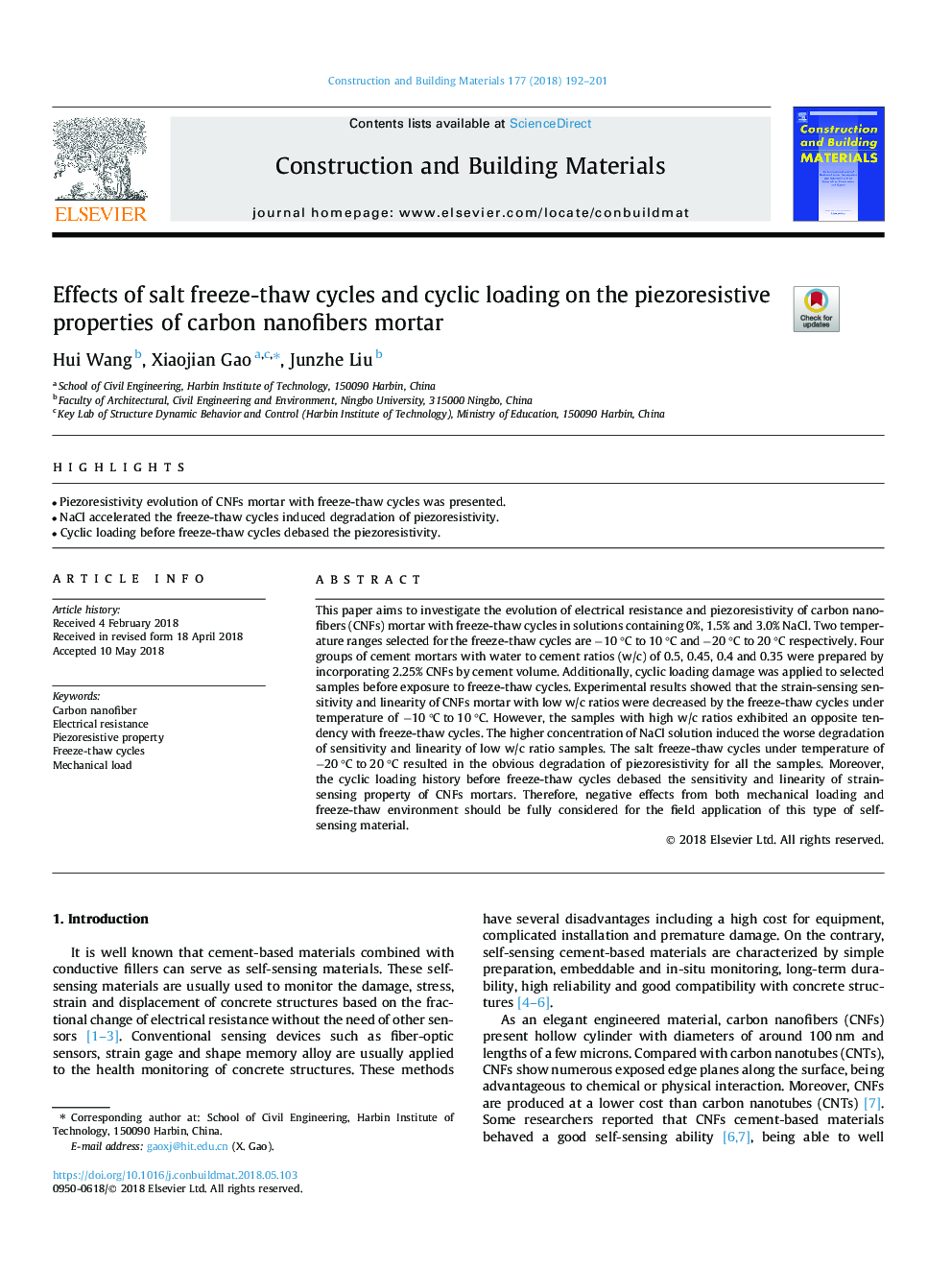| Article ID | Journal | Published Year | Pages | File Type |
|---|---|---|---|---|
| 6712956 | Construction and Building Materials | 2018 | 10 Pages |
Abstract
This paper aims to investigate the evolution of electrical resistance and piezoresistivity of carbon nanofibers (CNFs) mortar with freeze-thaw cycles in solutions containing 0%, 1.5% and 3.0% NaCl. Two temperature ranges selected for the freeze-thaw cycles are â10â¯Â°Câ¯toâ¯10â¯Â°C and â20â¯Â°Câ¯toâ¯20â¯Â°C respectively. Four groups of cement mortars with water to cement ratios (w/c) of 0.5, 0.45, 0.4 and 0.35 were prepared by incorporating 2.25% CNFs by cement volume. Additionally, cyclic loading damage was applied to selected samples before exposure to freeze-thaw cycles. Experimental results showed that the strain-sensing sensitivity and linearity of CNFs mortar with low w/c ratios were decreased by the freeze-thaw cycles under temperature of â10â¯Â°Câ¯toâ¯10â¯Â°C. However, the samples with high w/c ratios exhibited an opposite tendency with freeze-thaw cycles. The higher concentration of NaCl solution induced the worse degradation of sensitivity and linearity of low w/c ratio samples. The salt freeze-thaw cycles under temperature of â20â¯Â°Câ¯toâ¯20â¯Â°C resulted in the obvious degradation of piezoresistivity for all the samples. Moreover, the cyclic loading history before freeze-thaw cycles debased the sensitivity and linearity of strain-sensing property of CNFs mortars. Therefore, negative effects from both mechanical loading and freeze-thaw environment should be fully considered for the field application of this type of self-sensing material.
Related Topics
Physical Sciences and Engineering
Engineering
Civil and Structural Engineering
Authors
Hui Wang, Xiaojian Gao, Junzhe Liu,
